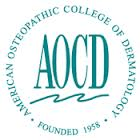
Whether you’re a teenager or an adult, understanding the causes, types, and effective treatment options for acne is crucial for achieving clear, healthy skin. In this comprehensive guide, we’ll delve into the world of acne and provide you with the knowledge you need to combat this skin concern.
Causes of Acne:
Acne doesn’t discriminate; it can affect people of all ages and backgrounds. To effectively manage acne, it’s essential to understand its causes. Common factors contributing to acne breakouts include:
- Hormonal Changes: Fluctuations in hormones, such as during puberty, pregnancy, or menstruation, can stimulate sebum (oil) production, leading to acne.
- Excess Sebum Production: Overactive sebaceous glands can result in the production of too much oil, clogging pores and creating an ideal environment for acne-causing bacteria.
- Bacteria: Propionibacterium acnes (P. acnes) is a bacterium that thrives in clogged pores, triggering inflammation and acne.
- Clogged Pores: Dead skin cells and excess oil can block hair follicles, creating the perfect conditions for acne to develop.
- Genetics: Your family history may play a role in your susceptibility to acne.
Types of Acne:
Acne isn’t a one-size-fits-all condition. It manifests in various forms, and understanding the different types can help you identify and treat your specific acne concerns:
- Whiteheads: Closed comedones are small, white bumps formed when pores are clogged with oil and dead skin cells.
- Blackheads: Open comedones are dark in appearance and result from clogged pores that remain open at the surface.
- Papules: Red, inflamed bumps without a visible center. They can be tender to touch and are often a result of bacterial infection.
- Pustules: Similar to papules but filled with pus at their center. These are often painful and can leave scars if not treated properly.
- Nodules: Large, solid, painful lumps beneath the skin’s surface, which can lead to severe scarring.
- Cysts: The most severe form of acne, cysts are large, pus-filled, painful lumps that can cause long-term scarring.
Effective Treatment Options:
Now that you have a solid understanding of acne’s causes and types, let’s explore effective treatment options that can help you achieve clearer skin:
- Topical Treatments: Over-the-counter or prescription creams and gels containing ingredients like benzoyl peroxide, salicylic acid, or retinoids can help unclog pores and reduce inflammation.
- Oral Medications: For more severe cases, dermatologists may prescribe antibiotics or oral contraceptives to regulate hormones.
- Chemical Peels: Chemical peels remove dead skin cells, promote cell turnover, and improve overall skin texture, reducing acne.
- Laser and Light Therapies: These treatments can target bacteria, reduce inflammation, and stimulate collagen production for healthier skin.
- Lifestyle Changes: A balanced diet, proper skincare routine, and stress management can play a significant role in preventing acne breakouts.
- Consult a Dermatologist: If your acne is severe or persistent, it’s crucial to seek professional advice from a dermatologist who can tailor a treatment plan to your specific needs.
Understanding acne’s causes, types, and effective treatment options is the first step toward achieving clear, healthy skin. While acne can be a challenging condition to manage, it’s essential to remember that there are numerous treatment options available. By addressing the root causes of acne and choosing the right treatments, you can take control of your skin and regain your confidence. Don’t hesitate to consult Oakland Hills Dermatology for personalized guidance on your acne journey. Your path to clearer skin is within reach!



